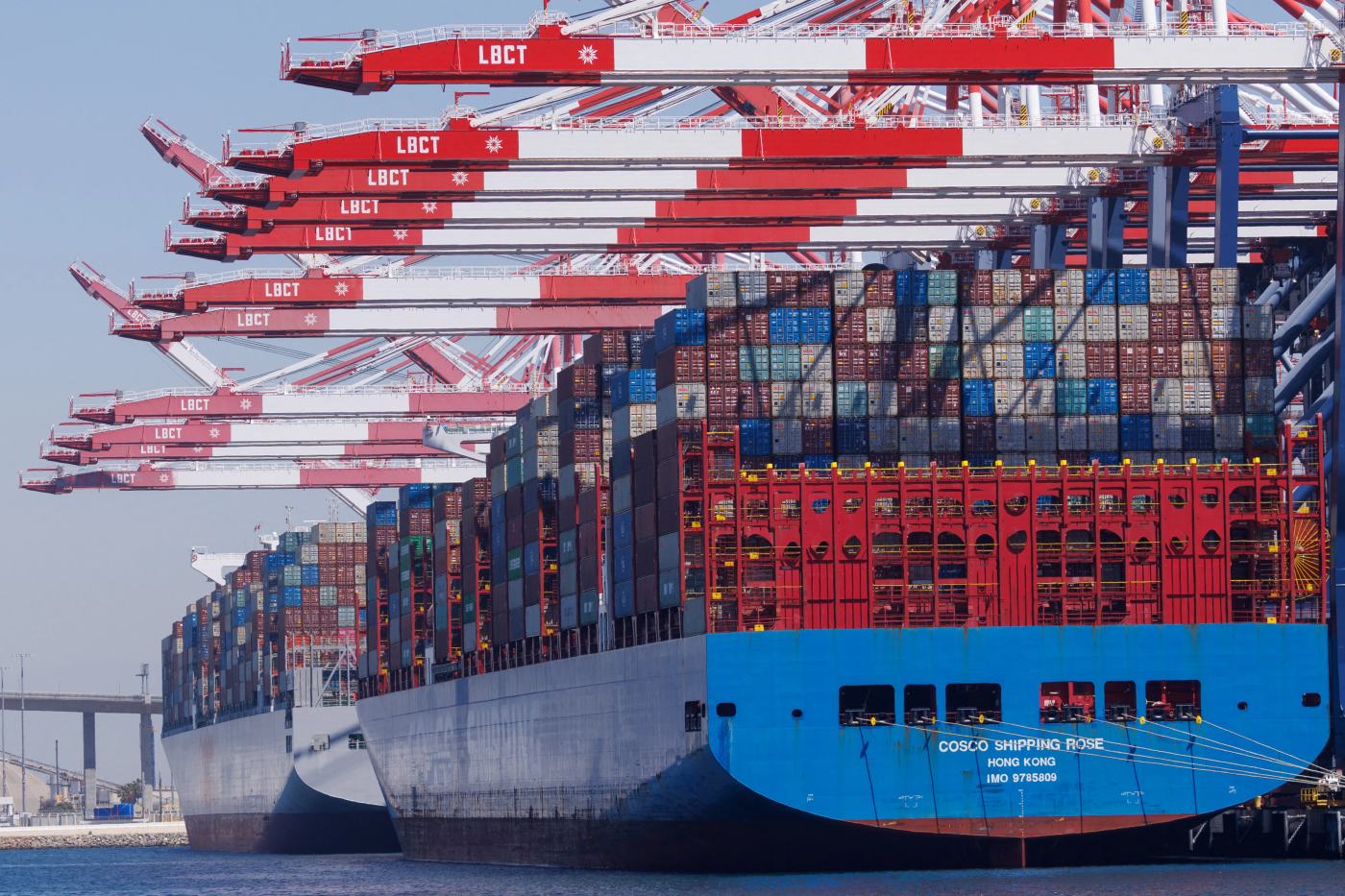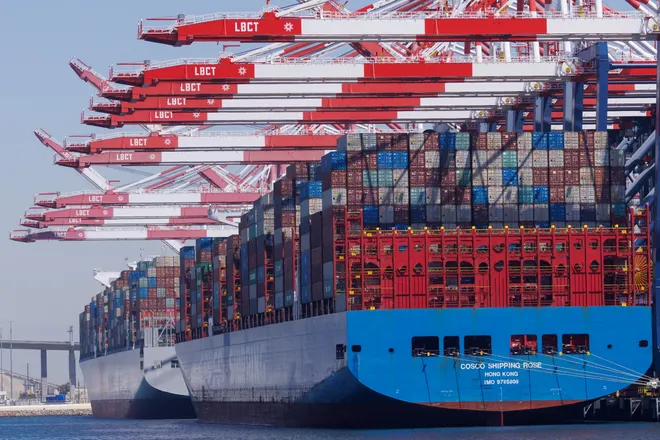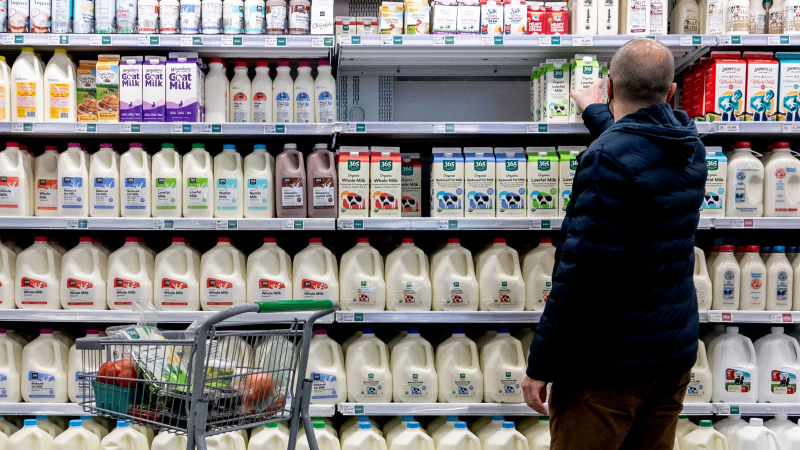
Trump's tariffs on Canada and Mexico are delayed. Economic turmoil is here.
President Donald Trump on Monday delayed the 25% tariff he was set to impose on imports from Canada and Mexico this week, providing a 30-day reprieve for American retailers and manufacturers.
But the uncertainty generated by those levies, the 10% tariff he slapped on Chinese imports and the prospect of additional tariffs are already affecting the U.S. economy as companies pause hiring and investment.
“The lingering threat of substantial new tariffs and possible retaliation from Canada and Mexico on U.S. exports will cause many businesses small and large to hold back more on hiring and investing than they would have otherwise due to the elevated uncertainty,” said Scott Anderson, chief U.S. economist of BMO Capital Markets.
Is business confidence high now?
Sixty-seven percent of American executives said they were more stressed heading into 2025 than they were a year earlier, according to an online survey of 1,000 executives at companies with at least 10 employees. The poll was conducted Nov. 25 to Dec. 9 by Wakefield Research for Sentry, a business insurance company.
Maximize your savings: Best high-yield savings accounts
And 47% of the company leaders said economic uncertainty was their biggest worry.

Forecasters say the tariffs will take a toll on the economy even if they’re not passed along to consumers through higher prices.
'One thing after another'
For Stephenson’s of Elkhart, a 92-year-old family-owned clothing store in Elkhart, Indiana, the trade war is the latest in a parade of crises, including the pandemic and a recent port strike that jeopardized apparel shipments, owner Danny Stephenson said.
“It seems like the last five years we’ve had to come back from one thing after another,” he said.
The store, which specializes in garments for weddings and special events, buys 50% to 60% of its products from manufacturers that source their products from China, Stephenson said.
He hopes the makers will at least absorb half the tariff cost. His business, he said, already has dealt with pandemic-related worker shortages that have pushed up labor costs and sharply rising utility bills, both of which have narrowed his profit margins.
Still, “In an inflationary environment, we’re not really in a position” to raise prices, Stephenson said, noting he competes with big-box chain stores that receive volume discounts. “At least initially, we would try to absorb it.”
Stephenson also said he wants to create a hospitable environment for customers, who just recently have regained their passion for in-store shopping.
But to offset the higher costs, he said he likely would have to scale back price promotions and put off renovations of the more than century-old downtown institution. Recently, he decided to upgrade the building’s facade and was planning to refurbish the interior this year.
“We may have to slow down or delay some of the projects,” he said.
Across the economy, such delays could mean a softer job market and more slowly growing economy.
Are there tariffs on Canada, Mexico?
While the tariffs on China took effect Tuesday, those on Canada and Mexico were deferred until March 4 after those countries agreed to draft plans to reinforce their borders to slow the flow of illegal drugs like fentanyl and immigrants who lack permanent legal status.
Yet even if they reach a deal, the risk of tariffs for both countries is likely to hover until they join the U.S. in a review of their 5-year-old free trade deal in mid-2026, Goldman Sachs said in a research note.
The 10% tariff on Chinese imports – also aimed at prodding that country to halt fentanyl crossings into the U.S. – was imposed after a call between Trump and Chinese President Xi Jinping aimed at averting the fees was canceled.
Chinese officials said starting Feb. 10, the country would hit the U.S. with retaliatory tariffs of 15% on coal and 10% on crude oil, farm equipment and some vehicles.
Additional tariffs on imports from China, the European Union and possibly other countries are likely, according to Goldman Sachs and BMO Capital Markets. Some would address national security concerns while others would be aimed at closing the U.S. trade gap with other nations, BMO Capital Markets wrote in a note to clients.
Oxford Economics estimates Canadian, Mexican and Chinese tariffs alone would raise the Federal Reserve’s preferred annual inflation measure from 2.8% to 3% by year’s end − nearly a percentage point above where it would have been absent the tariffs. Goldman and Moody’s Analytics expect a half percentage point bump to inflation this year.
Oxford also expects the economy to grow 1.4% this year, well below the 2.6% gain it had expected, assuming the China, Canada and Mexican tariffs are imposed and remain in effect.

'I can either raise my prices or take less money'
Margaret’s Boutique, a women’s clothing shop in Decorah, Iowa, buys about 15% of its dresses, sportswear, jewelry, shoes and other items from Canada and 80% from China, said owner Kelli Winchester.
Winchester said she likely can absorb the 10% fee on Chinese imports or make it up on other products but a 25% tax on Canadian goods would have a deeper impact.
“I can either raise my prices or take less money” in profits, Winchester said. Under the latter scenario, she said, “I’ll have less money to buy clothing.”
Well-known brand-name goods, she said, have thinner profit margins. “I have no choice but to pass (the tariff) along” to customers.
This week, she said, her suppliers agreed not to pass on the tariff costs to her this year, but she’s worried she eventually could be hit by the higher fees or that shoppers coping with grocery price increases due to tariffs will spend less on clothing.
This month, Winchester had planned to hire additional employees to handle the brisk summer business she typically sees in Decorah, a tourist spot. But she’s holding off for now.
“I probably want to wait to see how this all gets implemented,” she said.
'Tariffs just give us a reason to pause'
In some industries, the trade battle is inflamed by political tensions.
Midwest Barrel Co. of Louisville, Kentucky, sells barrels − after they’re used to age bourbon − to whiskey makers in 30 countries that distill their products in the containers for enhanced flavoring, said company CEO Jessica Loseke.
Loseke fears the barrels eventually could be socked with retaliatory tariffs by China, Canada and Mexico.
She’s also concerned about a 50% tariff by the European Union on American whiskey that’s set to take effect March 31 in retaliation for U.S. tariffs on EU imports during Trump’s first term. Meanwhile, she noted, Canadian officials are pulling American bourbon and other alcohol from store shelves because of their ire over Trump’s proposed 25% tariffs on imports from Canada.
Both developments will likely slow U.S. bourbon sales in an already weak market, reducing the global supply of used bourbon barrels and driving up their price, Loseke said. That, she said, would further dampen her sales.
Loseke also has been affected more directly. A Canadian whiskey maker has suspended its barrel orders from Midwest.
“They said they didn’t want to do business with a company in a ‘red’ state” that helped elect Trump, Loseke said.
As a result of the turmoil, Loseke has shelved plans to replace two staffers who recently left the 22-employee company.
“What these tariffs do is they create a lot of uncertainty across the global market,” she said. “Tariffs just give us a reason to pause."
She added: “I don’t want to bring somebody on and have to lay them off.”
This story was updated to add new information.

